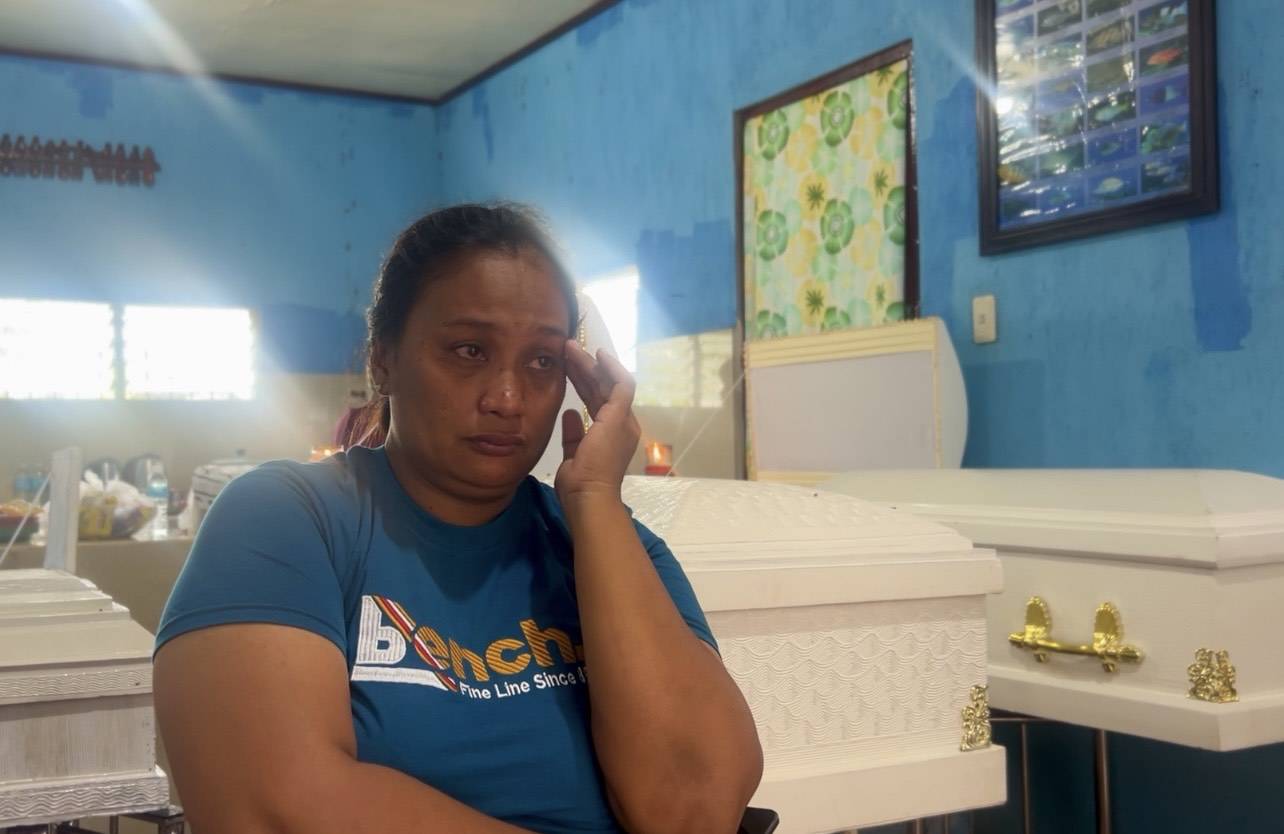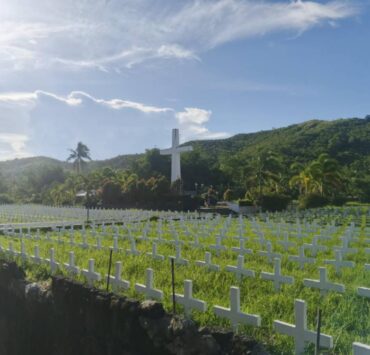Canlaon mother loses 8 relatives to flash floods days before birthday

CANLAON CITY—Instead of blowing out candles on her birthday cake on Friday, Sara Jane Diaz, 38, now lit them beside the caskets of eight members of her family – her husband, parents, three sisters, one brother, and the three-year-old daughter of one her sisters — all taken by the flash floods that tore through Canlaon City in Negros Oriental at the height of the impact of Typhoon “Tino” last Tuesday.
Her eyes were swollen from days of weeping, her voice quivering as she relived the night that changed everything — the night she thought she would have died, too.
“I just swam. I could hear the rocks crashing beside me. I was thrown everywhere. I couldn’t believe I’d survive,” Diza told the Inquirer on Friday, speaking in the local dialect.
Diaz remembered how ordinary the evening began. The rain had started to pour, but no one in her family felt alarmed. “
We never worry about floods here. Canlaon is high above the plains — we thought we were safe,” she said of that floods that, until then, were unheard of in their city.
Within minutes, their calm turned into panic. Water began to rush into their father’s house, where Sara, her husband, children, and parents sought shelter — believing it was the safest place.
No time to escape
“In just a few minutes, the water rose. We didn’t have time to prepare. The next thing we knew, it was already chest-deep,” Diz recounted.
She screamed to her mother, “Ma, bakwit nata (Mom, let’s evacuate)!” — but it was too late. The current was too strong, forcing them to climb onto the roof. Then came the moment she said she will never forget:
“I saw the water rise higher than the house,” Diaz recalled.
As they tried to escape toward their neighbor’s home, her husband was swept away by the raging floodwaters — gone in an instant. Diaz and her two children, aged 4 and 16, were also separated by the current.
Cry for help
As the waters pulled her farther away, she could see her children crying for help — their small voices fading beneath the storm.
“I tried to swim back,” she said softly, “but my body could no longer fight the current.”
“I saw my son climb onto our roof, and his older sister rescued him. But they were still separated. It was a miracle that my 4-year-old son survived — he rode on a coconut tree and was later picked up by our neighbor,” Diaz shared, noting that her daughter also survived the tragedy.
She remembered being slammed by debris — walls, logs, even a four wheel vehicle — until she lost consciousness. When she finally opened her eyes, she was lying by the riverbank of another barangay, bruised and weak.
“When I woke up, I thought it was just a dream. I thought I was already dead. I couldn’t believe I was still alive,” she whispered, tears falling.
But survival came with unbearable grief.
Diaz’s husband’s body was later found kilometers away — swept all the way to Negros Occidental before being brought home lifeless.
Her siblings were recovered the following day, buried in thick mud, still locked in an embrace. Her parents were found holding hands, palms pressed together as if in prayer.
One of her sisters, clutching her three-year-old child and their family’s image of the Sagrada Familia, made it to the rooftop before the structure collapsed. Her sister and her child did not make it.
“I asked God why it had to be all of us. But maybe He has a reason why He chose to let me live,” Diaz said.
Before the storm, her family had planned to celebrate her birthday with a trip to the sea — a simple family tradition.
“We were supposed to go to the beach because it’s my birthday. But now, even when I try to sleep, all I can see is them.”” she said, breaking into tears.
On her birthday, Diaz’s only wished to find another sister who was still missing — even if she turned up dead— so she could finally give her a decent burial beside the rest of their family.

















